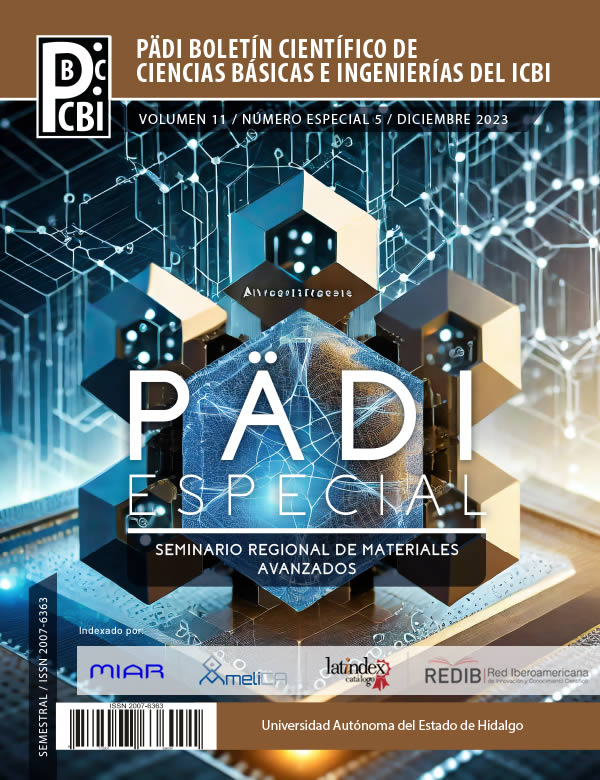Modeling nanovectors for cancer treatment
Abstract
The conjugation of nanostructures with bioactive molecules is used for diagnosis and treatment of cancer. Quercetin (QUE) is a flavonoid with antioxidant effect that inhibits oxidative stress and viability of cancer cells. Phaseolus lunatus (PHA) is a lectin with affinity to N-acetyl-D-galactosamine (GalNAc) structures, thus agglutinates blood group A erythrocytes. The objective of this paper was to model the interaction between QUE, PHA with carbon nanotubes multiwalled carboxylic (CNTMW-co) docking and dynamic molecular, using HEX6.3 and AMBER22. Six interactions sites were identified between QUE and PHA (F12-V114-N129-D217-D218-W219), while CNTMW-co not interfere with the recognition sites of GalNAc of the lectin. In conclusion, the implementation of nanovectors coupled to QUE and PHA could improve the cytotoxic effect on cancer cells.
Downloads
References
Fei Fang, E., Bun Ng, T. (2013). Antitumor Potential and Other Emerging Medicinal Properties of Natural Compounds. Springer.
Galbraith, W., & Goldstein, I. (1970). Phytohemagglutinins: A new classs of metalloproteins. Isolation, purification, and some properties of the lectin from Phaseolus lunatus. Febs Letters, 9(4), 197-201.
Gould, N., & Scheinberg, S. (1970). Isolation and Partial Characterization of Two Anti-A Hemagglutinins from P. lunatus. Archives of Biochemistry and Biophysics, 137(1), 1-11.
INEGI (2023). Estadísticas a propósito del día mundial contra el cáncer. Recuperado de: https://www.inegi.org.mx/contenidos/saladeprensa/aproposito/2023/EAP_Cancer.pdf
Jacob, M., Varghese, J., Murray, R. K., Weil, P. A., (2016). Cáncer: una perspectiva general. In: Rodwell, V., Bender, D., Botham, K., Kennelly, P., Weil, A., (Eds), Harper. Bioquímica ilustrada (30a ed.). McGraw Hill, Mx, pp. 721-725.
Nascimiento, K. S., Cunha, A. I., Nascimiento, K. S., Cavada, B. S., Azevedo, A. M., Aires-Barros, M. R. (2012). An overview of lectins purification strategies. Journal of Molecular Recognition, 25, 527-541.
O'Connell, M. (2006). Carbon Nanotubes: Properties and Applications (1st ed.). M. O'Connell, (Ed.) US: Taylor & Francis Group
Park, J. (2005). Quercetin. In: Coates, P., Betz, J., Blackman, M., Cragg, G., Levine, M., Moss, J., White, J., (Eds), Encyclopedia of Dietary Supplements (2a ed.). Informa Healthcare, USA, pp. 656-664.
Roberts, D., Goldstein, I. (1983). Adenine Binding Sites of the Lectin from Lima Beans (Phaseolus lunatus). The Journal of Biological Chemistry, 258(22), 13820-13824.
Vögele, M., Köfinger, J., Hummer, G. (2018). Molecular dynamics simulations of carbon nanotube porins in lipid bilayers. Faraday discussions, 209, 341–358.
WHO (2022). Cáncer. Recuperado de: https://www.who.int/es/news-room/fact-sheets/detail/cancer
Copyright (c) 2023 Holanda Cruz-Luis, María Hernández Huerta, Carlos Romero Díaz, Eduardo L. Pérez Campos, Laura Pérez Campos Mayoral, Alma D. Pérez Santiago

This work is licensed under a Creative Commons Attribution-NonCommercial-NoDerivatives 4.0 International License.













